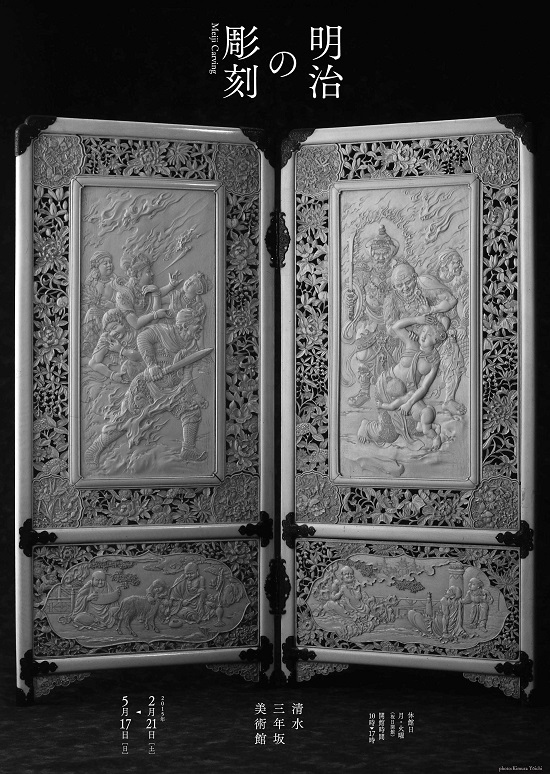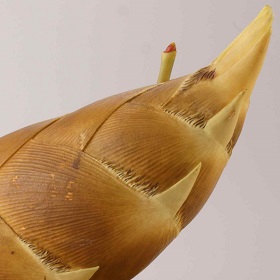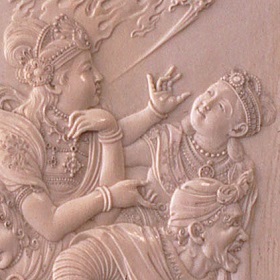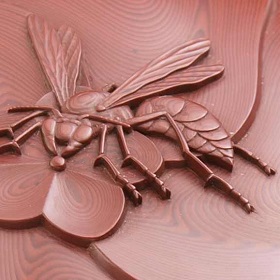
Meiji Carving
There are, in the sculpture of the Meiji Period, not only wood and ivory carving, but also are other carving work such as choshitsu, in which dozens of layers of colored lacquer are painted onto a plain surface and then carved, and chogan, where various engraved materials are inlayed into wood or ivory.
From ancient times people have carved wood, stone, bone, ivory, horn, and shell, and produced tools for daily life and armor, as well as various creations and decorations to be offered up to deities in religious ceremonies. Here in Japan as Buddhism flourished, carving techniques developed mainly for use on its abundant fine wood in the carving of Buddhas or for architectural decoration, and by the Edo Period, professional carvers of various kinds, including sculptors of Buddhist images and carvers for shrines and temples as well as mask or netsuke craftsman, had appeared and vied with one another. After the Meiji Restoration, however, domestic demand underwent a drastic change because of changes in manners and customs and the loss of patrons, with the result that many craftsmen were forced to turn to other fields. On the other hand, overseas markets opened up, and the remaining carvers found a means of survival in producing netsuke for trade, which were highly popular among Europeans and Americans. Therefore, ornaments in the form of realistically elaborated netsuke, genre style human figures depicting popular customs that reflected European and American tastes, and fancily decorated furnishings were produced in large quantities to be shipped overseas. And with the opening domestically of national industrial exhibitions and various art fairs, Japan gradually regained its economic vigor, and great artists such as Asahi Gyokuzan, Ishikawa Komei and Takamura Koun emerged to flourish.
This exhibit presents tsuishitsu lacquer works of Tsuishu Yosei and Henmi Toyo and the chogan works of Asahi Gyokuzan and Tanaka Isshu, as well as the wood and ivory carvings of Takamura Koun, Ishikawa Komei, and Ando Rokuzan. We hope that you appreciate this rare chance in Japan to view the diverse carving arts of the Meiji Period.
 2024-04-16 / 2015-02-21
2024-04-16 / 2015-02-21 

